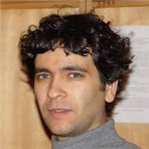
Matteo Compareti
Matteo Compareti is Guitty Azarpay Distinguished Visitor in the History of the Arts of Iran and Central Asia at the University of California, Berkeley. He studied at the University of Venice “Ca’ Foscari” in the faculty of oriental studies in 1999 and took hid PhD from the University of Naples “L‘Orientale,” working on the Silk Road in 2005. His interest is on the iconography of Mazdean divinities in Pre-Islamic Iran and Central Asia, especially Sasanian and Sogdian art.
Acknowledgments
General Introduction
PART ONE HISTORY
I. Historical and Geographical Introduction
I.1 The Land
I.2 The People
II. History of Sogdiana
II.1 The Ancient Period
II.2 The Period of Bactrian Domination
II.3 The Coming of the Turks
II.4 Tang Imperialism
II.5 The Arab Invasion
II.6 Islamization
PART TWO IDENTIFICATION
I. The Discovery of the Afrasyab Paintings
II. The So-called “Hall of the Ambassadors” at Afrasyab
II.1 Description of the Scenes
II.2 The Western Wall
II.3 The Southern Wall
II.4 The Northern Wall
II.4.1 The Hunting Scene
II.4.2 The Aquatic Scene
II.5 The Eastern Wall
III. Conclusion
PART THREE WRITTEN SOURCES
I. The Importance of the Written Sources
II. Chinese Sources
III. Islamic Sources
IV. Sources in Middle Iranian Languages
V. Byzantine Sources
Appendix: The Chinese Dynasties
List of Abbreviations
Bibliography
Primary Sources
Secondary Sources
General Index